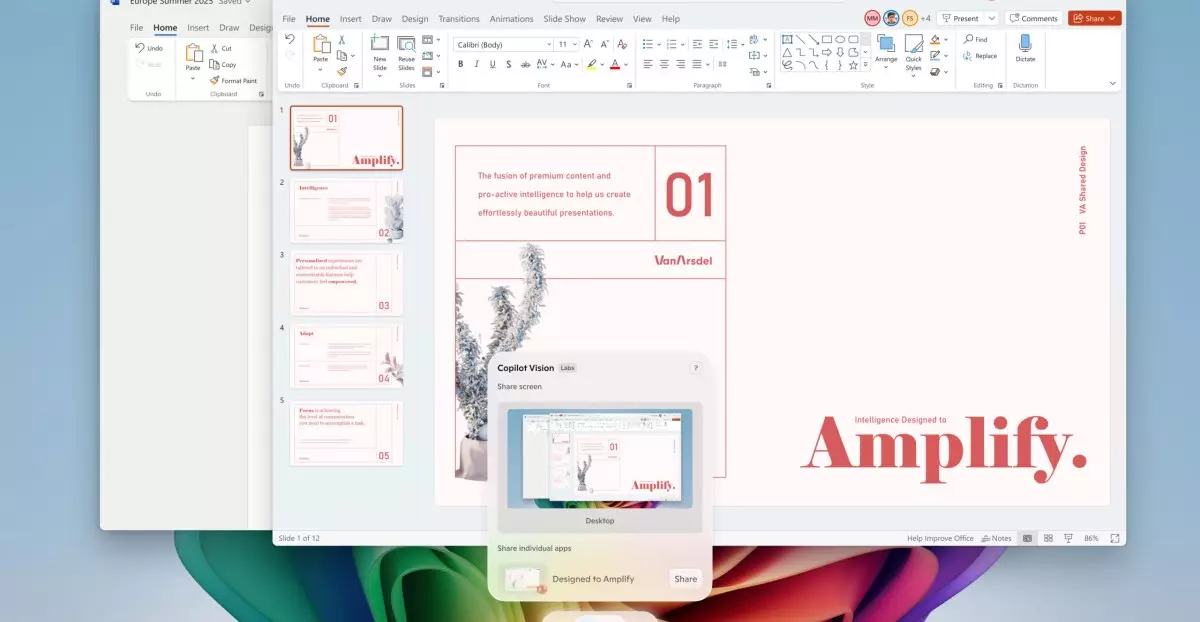Microsoft’s latest ambitious move signals a transformative shift in how we interact with personal computers. By integrating advanced AI features into Windows 11, the tech giant is not just enhancing user experience—it’s redefining the very fabric of digital interaction. The introduction of Copilot Vision, along with a suite of innovative tools, exemplifies Microsoft’s aspiration to create a more intuitive, efficient, and personalized computing environment. This push positions Windows as not merely an operating system but as an intelligent assistant capable of understanding and responding to our needs in real time.
The Power of Visual AI and Seamless Assistance
One of the most striking features is Copilot Vision — an AI-driven tool capable of scanning your entire screen to analyze content across applications and websites. This isn’t just a superficial addition; it’s a leap toward a future where computers understand context as deeply as humans do. Imagine asking your device, “What’s that photo’s lighting issue?” and receiving instant, actionable insights. This ability to interpret visual data bridges the gap between raw information and human understanding, making everyday tasks simpler and faster.
What makes this feature truly compelling is its accessibility. All Windows 11 users, regardless of hardware specifications, can utilize Copilot Vision through the Copilot app. Meanwhile, high-end devices—particularly those powered by Snapdragon chips—unlock an even more advanced suite of tools, including specialized AI agents embedded within the Settings app. These agents can perform tasks via natural language commands, erasing the friction associated with traditional settings adjustments and transforming it into a conversational experience.
Redefining Productivity and Creativity with AI
Microsoft’s enhancements don’t stop at basic assistance. The new “Click to Do” feature empowers users to execute complex actions instantly, simply by holding down a key combination and clicking on the content. This can range from summarizing text to drafting documents, thereby dramatically streamlining workflows. For instance, a user can highlight a paragraph, invoke “Click to Do,” and have the AI produce a summarized version — an invaluable tool in today’s fast-paced environment.
Creativity tools are equally augmented, with AI-powered features in Paint that facilitate sticker generation and object selection. These aren’t just gimmicks; they are practical enhancements that democratize design and editing, making artistic creation more accessible to every user. The new AI lighting adjustments in Photos and the “perfect screenshot” tools epitomize how AI is integrated to elevate what was once manual, tedious, and time-consuming into automated, high-quality results.
Exclusive Perks for Premium Users—A Double-Edged Sword?
While many features are rolling out broadly, some remain exclusive to “Copilot Plus” premium devices. From intelligent sticker creation to advanced image editing, these exclusive features serve as a compelling incentive for users to upgrade hardware. This tiered approach underscores a broader industry trend: leveraging hardware capabilities to unlock premium AI functionalities. However, it also raises questions about accessibility—does this reinforce a divide between those who can afford the latest tech and those who cannot?
Microsoft’s strategy appears to be balancing widespread utility with premium exclusivity, fostering a loyalty model that incentivizes investment in newer, more capable devices. While this may push the boundaries of AI integration, it risks creating disparities in user experience, favoring power users or tech enthusiasts with premium hardware.
AI as an Indispensable Tool, Not Just a Feature
Ultimately, Microsoft’s aggressive integration of AI into Windows reflects a broader societal shift: AI must be seen not as a luxury but as an essential extension of our digital lives. Far from being a simple enhancement, these features are shaping a new paradigm where computers anticipate needs, simplify complex tasks, and foster creativity effortlessly. The future of Windows, under Microsoft’s vision, is one where AI seamlessly melds into daily routines, transforming passive devices into active collaborators.
Yet, this bold vision isn’t without pitfalls. Reliance on AI introduces concerns over privacy, data security, and overdependence on automation. Critics might argue that such rapid adoption could outpace necessary safeguards, risking user trust and control. Nevertheless, Microsoft’s relentless push indicates a conviction that AI will be the centerpiece of future computing—an innovation that, if guided responsibly, can empower users in unprecedented ways.


Leave a Reply